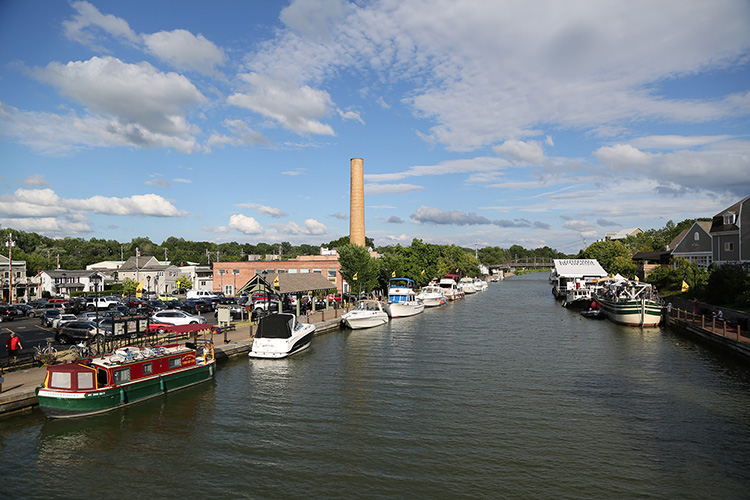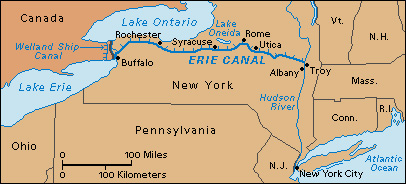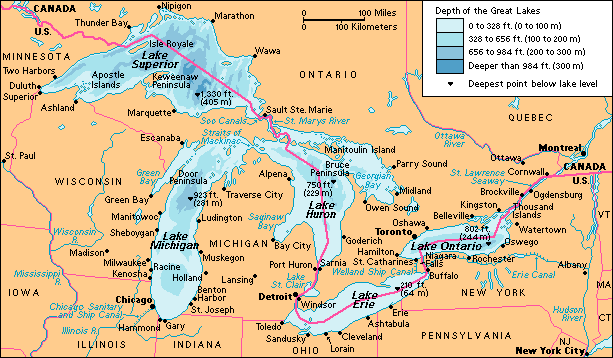Opening the Erie Canal
Friday, October 26th, 2018October 26, 2018
On this date in 1825, the Erie Canal was completed in upstate New York in the northeastern United States. The Erie Canal was the first important national waterway built in the United States. It crossed New York from Buffalo on Lake Erie to Albany to Troy on the Hudson River. The canal joined the Atlantic Ocean with the Great Lakes system. It provided a route over which manufactured goods and settlers could flow into the Midwest without passing through Canada, and over which timber and agricultural products could be transported back to the East Coast.

Many boats, like these in Fairport, New York, continue to navigate the Erie Canal. The canal opened 193 years ago today on Oct. 26, 1825. Credit: © Leonard Zhukovsky, Shutterstock
For a hundred years before the Erie Canal was built, people had been talking about a canal that would join the Great Lakes and the Atlantic Ocean. The man who planned the Erie Canal and carried the plans through was De Witt Clinton. Clinton was mayor of New York City for most of the period between 1803 and 1815. He was governor of the state from 1817 to 1822 and again from 1825 until his death in 1828. Those who opposed the canal laughingly called it “Clinton’s Ditch.”

Click to view larger image
The Erie Canal crosses New York from Buffalo on Lake Erie to Troy and Albany on the Hudson River. Credit: WORLD BOOK map
In 1816, after failing to secure federal funding, Clinton petitioned the New York State Legislature to build the canal. His petition won so much support that the governor appointed a canal commission and made Clinton its head. Clinton became governor in 1817, and shortly afterward, on July 4, 1817, broke ground for the canal in Rome, New York, then a village on the Mohawk River. The canal opened after eight years of construction on Oct. 26, 1825. The first barge to travel its entire length, Seneca Chief, left Buffalo with Clinton on board on that day. It arrived in New York City on November 4 and was greeted all along the way by enthusiastic crowds.
The building of the canal was paid for by the state of New York. It cost $7,143,789, but it soon earned its price many times over. The canal cut freight rates between Buffalo and New York City by more than 90 percent and strengthened New York City’s position as the nation’s largest city and principal port. As the canal traffic grew, towns along its course prospered. Albany, Utica, Syracuse, Rochester, and Buffalo became major cities.
The canal was enlarged several times between 1835 and 1862. But business began to fall off in the 1870’s as railroads became the main long-distance carriers of freight and passengers. In 1903, the people of New York voted to build a great modern waterway, linking the Erie Canal with three shorter canals in the state to form what now is called the New York State Canal System. This system, which is 524 miles (843 kilometers) long, opened in 1918.



